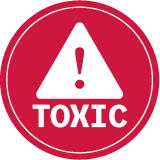Could This Common Misdiagnosis Be Harming Your Dog?
Relatively common but often misdiagnosed, this canine disease causes fatigue and weakness. Sadly, there's no cure, but if identified early, treatment and management are possible so your pet can continue living a comfortable life.

STORY AT-A-GLANCE
- Polymyositis is an inflammatory muscle condition in dogs that's often misdiagnosed. It can be triggered by infections, immune system disorders, or cancer and affects multiple muscles
- Primary symptoms include weakness, gait changes, fatigue, muscle swelling, and exercise difficulty. When head muscles are affected, dogs may have trouble swallowing and experience voice changes
- High-risk breeds include Boxers, Newfoundlands, Vizslas, and Pembroke Welsh Corgis. Dogs with cancer or autoimmune diseases are especially susceptible to developing polymyositis
- Diagnosis requires extensive testing, including blood counts, biochemical profiles, and muscle biopsies. The condition is often misdiagnosed because symptoms resemble other diseases
- Treatment includes corticosteroids to suppress the immune response and daily exercise for muscle rebuilding. Early detection is crucial, though prognosis is poor if caused by cancer
If your dog is walking differently than usual, or if they seem tired all the time, there’s a possibility that it’s this condition — polymyositis. This neuromuscular disease is rooted in inflammation and can severely affect your dog’s quality of life. This article will give you an overview of polymyositis and how to offer your pet relief.
What Is Polymyositis and What Causes It?
Canine polymyositis is an inflammatory condition that affects two or more muscles in your pet’s body.1 It commonly occurs in the striated skeletal muscle and can either be a primary disorder or may develop secondary to other conditions.2
But why does muscle inflammation occur in the first place? There are three different factors that can trigger polymyositis, namely:3
- Infectious agents — This is the most common cause and may arise from different types of bacteria, viruses, parasites, or protozoa. Two examples include the protozoal organisms Neospora and Toxoplasma, which can infect muscles.
- Immune-mediated — In this case, your dog’s body triggers the condition — specifically their immune system. When your dog’s immune system mistakenly attacks and damages healthy muscle tissue, it can cause scar tissue and lead to weakness. Polymyositis has been associated with autoimmune diseases like lupus erythematosus and dermatomyositis.
- Cancer (paraneoplastic) — Polymyositis can manifest when there are cancerous tumors in your pet’s body, as they can release substances that damage muscle tissue. Lymphoma is one type of cancer that can affect your pet’s muscular system.
Certain drugs or medications can also trigger Polymyositis.4 The severity of this condition depends on the underlying cause and how widespread the damage is to the muscles. When the muscles are affected by polymyositis, they lose muscle fibers; these are then replaced by scar tissue. The more scar tissue there is, the weaker the muscle becomes.
Common Symptoms to Keep an Eye Out For
It’s crucial to treat polymyositis immediately. If left untreated, the damage can become so severe that your pet’s muscle loses its ability to function correctly. Hence, as pet parents, you must be observant and quick to notice changes in your pet’s gait, activity level, and disposition. Here are some common symptoms of polymyositis:5,6
- Generalized weakness that becomes more noticeable with exercise
- Changes in their gait (movements are stiff, short-strided or they may bunny hop)
- Fatigue
- Muscle swelling
- Lack of appetite
- Muscle wasting
- Inability to exercise (or becoming tired quickly after exercising)
- Fever
- Regurgitation
- Difficulty swallowing
- Excessive drooling
- Change in their bark
The last three symptoms may occur if polymyositis affects the muscles of your dog's head. If you notice any of the symptoms above, contact your veterinarian for a checkup immediately.
Although any dog can develop polymyositis, certain breeds, such as Boxers, Newfoundlands, Vizslas, and Pembroke Welsh Corgis, have a higher risk of developing this condition.7 Those who have been diagnosed with cancer or have an underlying autoimmune disease are also predisposed to this disease. Cats may also develop polymyositis.8
However, because the hallmark symptoms of this condition can be similar to those of other diseases, it’s common for polymyositis to be misdiagnosed. Some pet parents would disregard the changes in their pet’s behavior or think it’s simply boredom. Sadly, this is the reason many cases of polymyositis — and its underlying trigger — are misdiagnosed.
Diagnosing and Treating Polymyositis
Diagnosing polymyositis can be tricky, as it will involve a comprehensive history and various types of examinations to rule out other conditions. Some diagnostic tests that your vet may require include:9
- Complete blood count (CBC) — This will help rule out other infections or conditions that can trigger similar symptoms.
- Biochemical profile — Your vet will require this to assess your dog's organ function and identify abnormalities. Through this exam, your dog’s creatinine kinase (CK) level will be checked for indications of any muscle damage.
- Muscle biopsy — A small tissue sample will be taken from your pet and examined by your vet under the microscope. A biopsy is the best way to confirm a polymyositis diagnosis.
Once your pet is confirmed to have polymyositis, your vet will recommend starting treatment immediately. Medications used to treat this condition include corticosteroids to suppress the immune response. If underlying infectious diseases trigger polymyositis, treatment for that disease is also necessary.
Your dog must also rebuild the lost muscle tissues as part of their recovery. Daily exercise is necessary in this case. Unfortunately, if polymyositis occurs because of cancer, the prognosis is usually poor.10 Hence, you must take the necessary steps to help your dog avoid cancer — feeding a nutritionally balanced, species-appropriate diet, sufficient daily exercise, and regular vet visits are essential to maintain your pet’s health so they can avoid triggers related to polymyositis.










